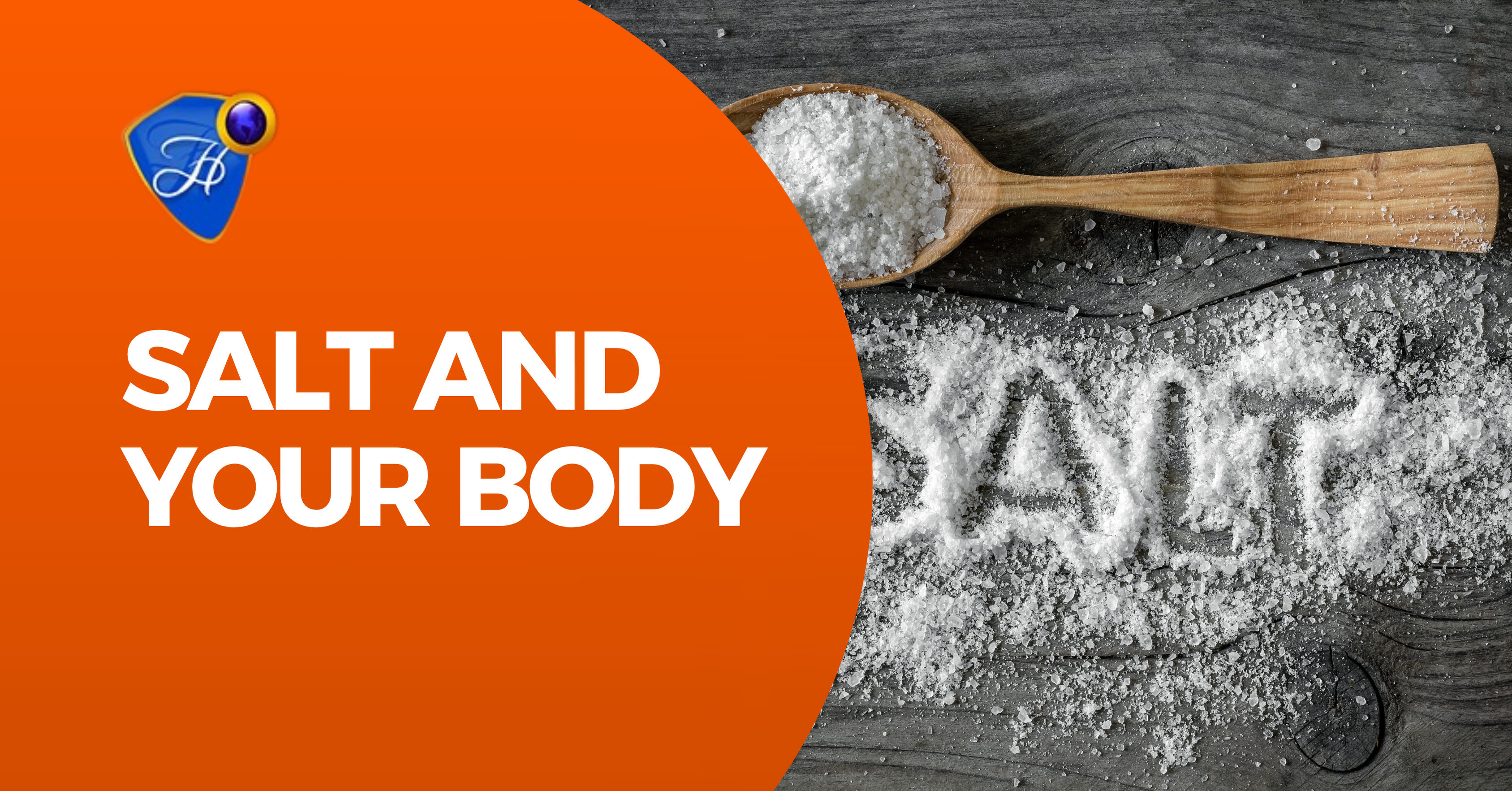SALT AND YOUR BODY
Salt, or sodium chloride (NaCl), is one of the most essential minerals in the human diet. It has been used for centuries not only as a seasoning to enhance the taste of food but also as a preservative to keep food fresh. Beyond its culinary uses, salt plays vital roles in the body’s biological processes. However, like many dietary components, it can be both beneficial and harmful depending on the amount consumed. Understanding the relationship between salt and the body is crucial for maintaining good health.
WHAT IS SALT MADE OF?
Salt is composed of two elements: sodium and chloride. Both are electrolytes—substances that carry an electric charge and help regulate important functions in the body. Sodium, in particular, is the more biologically active component that influences blood pressure, nerve signals, and fluid balance.
While salt is essential, the human body only requires it in small amounts. According to the research, adults should consume less than 5 grams of salt per day (about one teaspoon). Unfortunately, many people consume far more than this, largely because of processed and packaged foods.
THE IMPORTANCE OF SALT IN THE BODY
1. Maintains Fluid Balance
Sodium helps regulate the amount of water in and around cells. It ensures that fluids are distributed correctly across tissues and organs, preventing dehydration or fluid overload.
2. Supports Nerve Function
Sodium is essential for the transmission of nerve impulses. Without it, the body would struggle to send electrical signals from the brain to the muscles and organs, leading to impaired coordination and muscle weakness.
3. Helps with Muscle Contraction
Muscles, including the heart, rely on sodium and other electrolytes like potassium and calcium to contract and relax properly. This balance ensures smooth muscle movements and a regular heartbeat.
HEALTH BENEFITS OF ADEQUATE SALT INTAKE
Prevents Hyponatremia: Too little sodium in the body can lead to hyponatremia, a condition that causes headaches, confusion, fatigue, nausea, and in severe cases, seizures or coma.
Supports Exercise Performance: Athletes lose sodium through sweat, and replenishing it is important to prevent muscle cramps and maintain endurance.
Helps Manage Blood Volume: Adequate sodium ensures proper blood circulation and oxygen delivery throughout the body.
THE RISKS OF EXCESS SALT
Consuming too much salt can have harmful effects:
High Blood Pressure (Hypertension): Excess sodium causes the body to retain water, which increases blood volume and puts strain on blood vessels and the heart. Hypertension is a major risk factor for heart disease, stroke, and kidney failure.
Kidney Damage: The kidneys filter excess sodium. Over time, too much salt can overwork them, increasing the risk of chronic kidney disease.
Osteoporosis: High salt intake can lead to calcium loss through urine, which weakens bones and raises the risk of osteoporosis.
The key to healthy salt consumption is moderation. Both deficiency and excess are harmful. The body thrives when sodium levels are balanced—enough to support essential functions but not so much that it stresses the cardiovascular system.
Salt is indispensable to human life. It regulates fluid balance, supports nerve and muscle function, and aids digestion. However, the modern diet often delivers far more salt than the body requires, increasing the risk of hypertension, heart disease, kidney problems, and other health issues. By making conscious food choices, cooking wisely, and moderating processed food intake, you can strike the right balance. Remember: salt is vital—but only in the right amount.























Comments
Eleanor Fant
One’s of the best template out of there. design, code quality, updates etc everything you needs guys, buy it you won’t regret it!
Alexander Ljung
This theme is super awesome! But I had one small issue with link option in parallax portfolio. The other day!
Shahnewaz Sakil
His many legs, pitifully thin compared with the size of the rest of him, waved about helplessly as he looked
Leave A Comment
Kindly note that your comment/reply will first be approved before it appears above